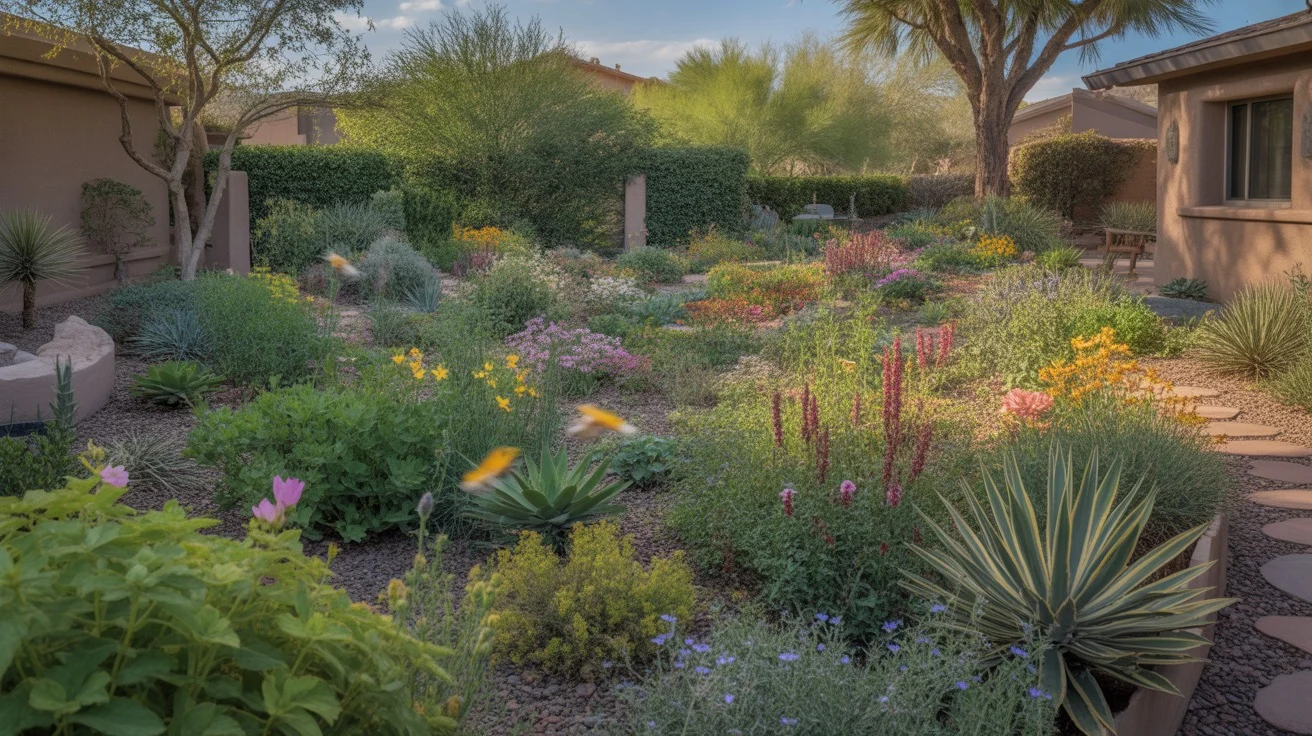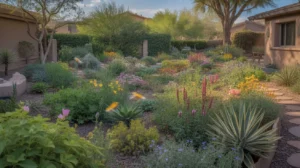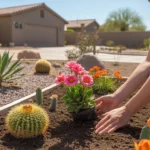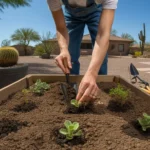As the warmth of spring arrives in Mesa, it’s the perfect time for gardeners to roll up their sleeves and get their hands dirty. With some expert tips and a little elbow grease, you can transform your garden into a lush oasis bursting with vibrant colors and healthy plants. Whether you’re a seasoned green thumb or a novice looking to cultivate your first plot, these spring gardening tips will help unleash your Mesa garden’s full potential.

Preparing Your Garden Beds
Before you start planting, it’s crucial to get your garden beds in top shape. Begin by clearing out any dead leaves, debris, or weeds that may have accumulated over the winter months. This will help prevent pests and diseases from taking hold in your garden.
Next, loosen the soil with a garden fork or tiller to a depth of about 12 to 18 inches. This will improve drainage and aeration, making it easier for your plants’ roots to grow and access nutrients. If your soil is compacted or heavy with clay, consider adding organic matter such as compost or well-rotted manure to improve its structure and fertility.
One local expert recommends getting a soil test to determine your garden’s specific nutrient needs. “By understanding your soil’s pH level and nutrient profile, you can tailor your soil amendments and fertilizers to give your plants the best possible growing conditions,” they explain.
Selecting the Right Plants for Mesa’s Climate
When it comes to choosing plants for your Mesa garden, it’s important to consider our unique desert climate. Look for varieties that are well-adapted to hot, dry conditions and can tolerate the intense sunlight we experience during the spring and summer months.
Some excellent options for Mesa gardens include native plants like penstemon, desert marigold, and globe mallow, as well as heat-loving vegetables like tomatoes, peppers, and eggplants. Herbs such as basil, rosemary, and thyme also thrive in our climate and can add both flavor and beauty to your garden.
As you select your plants, pay attention to their sun and water requirements to ensure they’ll thrive in your specific garden conditions. Group plants with similar needs together to make watering and care more efficient.
Planting Techniques for a Thriving Garden
When it’s time to put your plants in the ground, there are a few key techniques to keep in mind. First, make sure to dig holes that are large enough to accommodate your plants’ root systems. A good rule of thumb is to make the hole about twice as wide as the root ball.
Before placing your plant in the hole, gently loosen any tightly bound roots to encourage them to spread out into the surrounding soil. Once your plant is in place, backfill the hole with soil and tamp it down gently to remove any air pockets.
Water your newly planted additions thoroughly, and consider applying a layer of mulch around their base to help retain moisture and suppress weeds. “A 2 to 3-inch layer of organic mulch can make a big difference in your plants’ health and water needs,” notes a Mesa landscaper.
Pruning for Health and Beauty
Spring is also the ideal time to prune many of your garden plants, including roses, fruit trees, and woody shrubs. Pruning helps to remove dead, damaged, or diseased growth, as well as to shape your plants and encourage healthy new growth.
When pruning, always use clean, sharp tools to avoid damaging your plants. Make cuts at a 45-degree angle just above a leaf node or bud, and avoid removing more than one-third of the plant’s overall growth at one time.
For flowering plants like roses, pay attention to their specific pruning needs and timing. “Some roses bloom on old wood, while others bloom on new growth,” explains a local rosarian. “Knowing your variety’s habits will help you prune at the right time for maximum blooms.”
Watering Wisely
As the weather heats up, your garden will rely on you for consistent moisture. However, it’s important to water wisely to avoid wasting this precious resource and to keep your plants healthy.
Water your garden deeply and less frequently, rather than providing shallow, daily watering. This encourages your plants to develop deeper root systems that are more resilient to drought stress. Aim to water in the early morning hours, when evaporation rates are lower and your plants have time to absorb the moisture before the heat of the day sets in.
Consider installing a drip irrigation system or using soaker hoses to deliver water directly to your plants’ root zones. This can help reduce water waste and prevent fungal diseases that can develop when foliage stays wet for extended periods.
Attracting Pollinators and Beneficial Insects
A thriving garden isn’t just about the plants – it’s also about the creatures that call it home. By attracting pollinators like bees, butterflies, and hummingbirds, you can help your garden be more productive and support local ecosystems.
To draw in these beneficial creatures, plant a variety of nectar-rich flowers in your garden. Good options for Mesa include salvias, penstemons, and desert honeysuckle. You can also provide additional resources like a shallow water source or a bee hotel made from bundled hollow stems.
In addition to pollinators, your garden can benefit from the presence of predatory insects that help keep pests in check. Ladybugs, lacewings, and praying mantises are all valuable allies in the fight against aphids, mites, and other garden foes. Planting herbs like dill, fennel, and cilantro can help attract these good bugs to your garden.
Ongoing Garden Maintenance
As your spring garden takes off, it’s important to stay on top of regular maintenance tasks to keep things looking their best. This includes weeding, deadheading spent blooms, and monitoring for signs of pests or disease.
Weeds can quickly take over a garden bed, competing with your plants for water and nutrients. Make it a habit to pull weeds regularly, ideally when they’re still small and before they have a chance to set seed. Applying a thick layer of mulch can also help suppress weed growth.
Deadheading, or removing spent blooms, can encourage many plants to produce more flowers and look tidier. Simply snip off the faded blooms at their base, taking care not to damage the surrounding foliage.
Finally, keep a close eye out for any signs of pests or disease in your garden. Common issues in Mesa include aphids, whiteflies, and powdery mildew. If you spot a problem, address it quickly using the least toxic method possible, such as handpicking pests or applying a sharp blast of water to dislodge them.
By following these spring gardening tips and giving your Mesa garden the care and attention it needs, you’ll be rewarded with a stunning outdoor space filled with healthy, vibrant plants. Whether you’re growing veggies, tending to a rose garden, or simply enjoying the beauty of the desert in bloom, the joys of spring gardening are sure to brighten your days.











